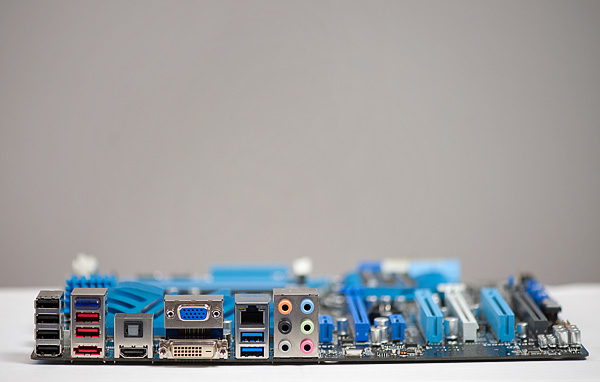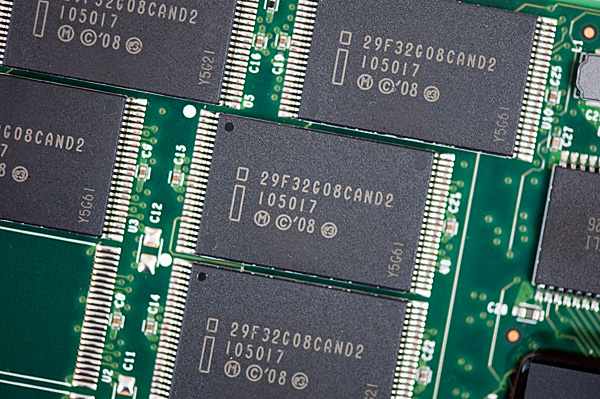Intel Z68 Chipset & Smart Response Technology (SSD Caching) Review
by Anand Lal Shimpi on May 11, 2011 2:34 AM ESTFinal Words
Intel's Z68 should have been the one and only high end launch chipset offered with Sandy Bridge. It enables all of the configurations we could possibly want with Sandy Bridge and does so without making any sacrifices. Users should be able to overclock their CPU and use integrated graphics if they'd like. While Z68 gives us pretty much exactly what we asked for, it is troubling that we even had to ask for it in the first place. With Intel holding onto a considerable performance advantage and a growing manufacturing advantage, I am worried that this may be a sign of things to come. It was strong competition from AMD that pushed Intel into executing so flawlessly time and time again, but it also put Intel in a position where it can enforce limits on things like overclocking. Let's hope that Z68 corrected a mistake that we won't see repeated.
Intel's Smart Response Technology (SRT) is an interesting addition to the mix. For starters, it's not going to make your high end SSD obsolete. You'll still get better overall performance by grabbing a large (80-160GB+) SSD, putting your OS + applications on it, and manually moving all of your large media files to a separate hard drive. What SRT does offer however is a stepping stone to a full blown SSD + HDD setup and a solution that doesn't require end user management. You don't get the same performance as a large dedicated SSD, but you can turn any hard drive into a much higher performing storage device. Paired with a 20GB SLC SSD cache, I could turn a 4-year-old 1TB hard drive into something that was 41% faster than a VelociRaptor.
If you're building a system for someone who isn't going to want to manage multiple drive letters, SRT may be a good alternative. Similarly, if you're building a budget box that won't allow for a large expensive SSD, the $110 adder for an Intel SSD 311 can easily double the performance of even the fastest hard drive you could put in there. The most obvious win here is the lighter user that only runs a handful of applications on a regular basis. As our tests have shown, for light workloads you can easily get the performance of an X25-M G2 out of a fast hard drive + an SSD cache. Even gamers may find use in SSD caching as they could dedicate a portion of their SSD to acting as a cache for a dedicated games HDD, thereby speeding up launch and level load times for the games that reside on that drive. The fact that you can use any SSD as a cache is nice since it gives you something to do with your old SSDs when you upgrade.
I believe there's a real future in SRT, however it needs to be available on more than just the highest end Sandy Bridge motherboards. I'd like to see SSD caching available on all Intel chipsets (something that we'll get with Ivy Bridge and the 7-series chipsets next year), particularly on the more mainstream platforms since that appears to be the best fit for the technology. I would also prefer a larger cache drive offering from Intel (at least 40GB) as it wasn't that difficult to evict frequently used programs from the SSD cache. The beauty of NAND is that we'll of course get larger capacities at similar price points down the road. Along those lines I view SRT as more of a good start to a great technology. Now it's just a matter of getting it everywhere.












106 Comments
View All Comments
quang777 - Monday, August 8, 2011 - link
Does it work with older SSDs that don't support TRIM? Will SRT "cleanup" like TRIM to keep the cache "clean"?cbuck - Thursday, September 22, 2011 - link
For those working w/in the X58 chipset world and who have access to the Marvell 9128 "Hyperduo" SATA III (6GB) chip supported motherboards, what have people seen in terms of stability and speed?Understandably, the X58 chipset is a quickly fading market, but I happened to have a spare i7 920 D0 lying around and picked up a recently released LGA 1366 motherboard to put that CPU to use....
Tastare - Monday, October 31, 2011 - link
I'm looking for a functionality/application acting like:1. Smart responce technology (problem: cannot be used when OS is installed on SSD) or
2. Readyboost, but without deleting the cache during reboot.
I want a program/function working like a read and write cache(*) for a the 7200rpm drive (using e.g. 10-30GB of the SSD disk or USB for cache) that "survives" OS restart. Do anyone know if there exist any application with this functionality (Solutions I know: 1. buy a second SSD to use for HD cache, and 2. I could install OS on the 7200 rpm drive and use part of the SSD as cache)?
(*) With cache I mean something like:
- mirror the latest filecs read from the HD, and
- writes data directly to the USB, and later mirror the data to the Hard drive (when it has started up from idle to 7200rpm.)
Background: My system: Windows 7, Z68 motherboard, 120GB SSD + 1GB disk 7200rpm. The slower disk goes into standby (which is fine because I doesn't use it so often), but when data is needed it starts up slowly which is annoying.
bell2366 - Tuesday, February 28, 2012 - link
I'm suprised the HD manufacturers have not started fighting back and providing hybrid SSD/HDD's with write through cache etc, 1TB hard disk with 64GB SSD on board would rock.Especially if they take the supercapacitor route for guarenteed writes to SSD NAND on power failures.
I've recently bought one of the new Comay Venus 120GB SSD's and it has these features, not to mention performance that blows OCZ out of the water. Just wish I didn't have to mess around thinking what to keep on SSD and what to keep on HDD, a hybrid would be simplicity itself.
astrojny - Friday, May 4, 2012 - link
Any thought on using Intel's Smart Technology with the 1TB Western Digital Raptor that was just released?btkcsd - Saturday, December 13, 2014 - link
Do you know if SRT will work with all processors that are otherwise compatible with the Z68 chipset? I've seen some reports that only true "core" processors are supported, like the i3/i5/i7 while Sandy Bridge based Celerons and Pentiums are not.